✓ Joining us on our Whatsapp Channel: 💬 Explore and Escape!.
Booking through us:
✓ 🏩 🛌 Handpicked Luxury Stays in Budget: Booking.com | Agoda.com
✓ 🍹⛱️ Deals on Private xfers, SIM Cards, City tours, Day trips : 📍🗺️ GetYourGuide | 🛵🧳 Klook
com/landmarks/oceania-landmarks/landmarks-of-australia/”>landmarks in South America, and so are in Argentina.
Argentina’s natural wonders are jewels that sparkle in the crown of its diverse landscape, each shining with a brilliance that leaves visitors in awe.
From the towering Andes Mountains and cascading Iguazu Falls, to the pristine glacial lakes and rugged Patagonian wilderness, Argentina’s natural landmarks are a symphony of beauty that awakens the senses and inspires the soul.
1. Iguazu Falls
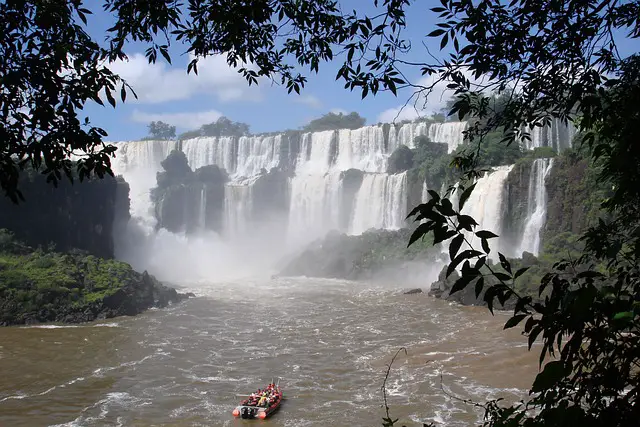
Iguazu Falls is a mesmerizing natural wonder situated on the border of Argentina and Brazil. It is a collection of hundreds of waterfalls that stretch across a 2.
7-kilometer-long horseshoe-shaped gorge.
What to see or do: Witness the cascading waterfalls from various viewpoints, including Garganta del Diablo (Devil’s Throat), which is the highest and most impressive waterfall.
Take a boat tour to experience the falls up close and get a refreshing splash. Walk through the lush rainforest and spot exotic wildlife such as toucans, monkeys, and jaguars.
Don’t miss: The panoramic views from the Argentina side, which offer a closer and immersive experience of the falls. The Brazil side, on the other hand, provides a panoramic view of the entire falls from afar.
The light and sound show at the falls’ foot is a breathtaking spectacle not to be missed.
Insider travel tips: Visit during shoulder season for fewer crowds and better weather. Wear comfortable shoes and bring a waterproof jacket as you will get wet from the mist.
Buy tickets in advance and arrive early in the morning to avoid queues.
Stay at one of the hotels within the national park to have easy and exclusive access to the falls outside of opening hours.
2. Perito Moreno Glacier
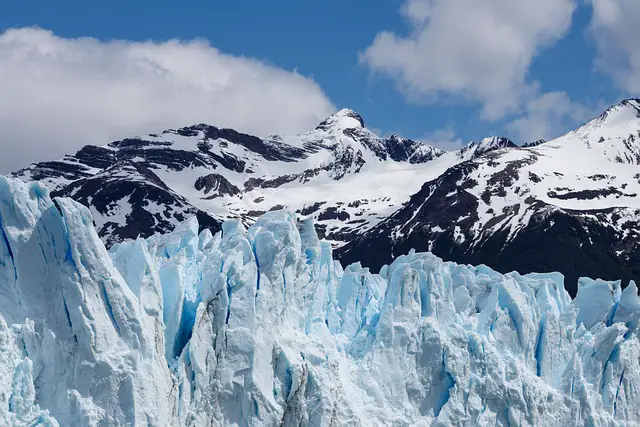
Perito Moreno Glacier is a stunning glacier located in Los Glaciares National Park, in the province of Santa Cruz, Argentina.
What to see or do: Visitors can witness the majestic glacier up close by taking a boat tour or enjoying a leisurely hike along the extensive catwalks.
The glacier towers over the Patagonian landscape and is surrounded by impressive snow-capped mountains.
Don’t miss: The highlight of any visit is witnessing the glacier calving, where massive ice masses break off and crash into the lake below, creating a thunderous sound and impressive waves.
Insider travel tips: Pack warm clothes, even in the summertime, as temperatures can be chilly at the glacier.
3. Mount Aconcagua
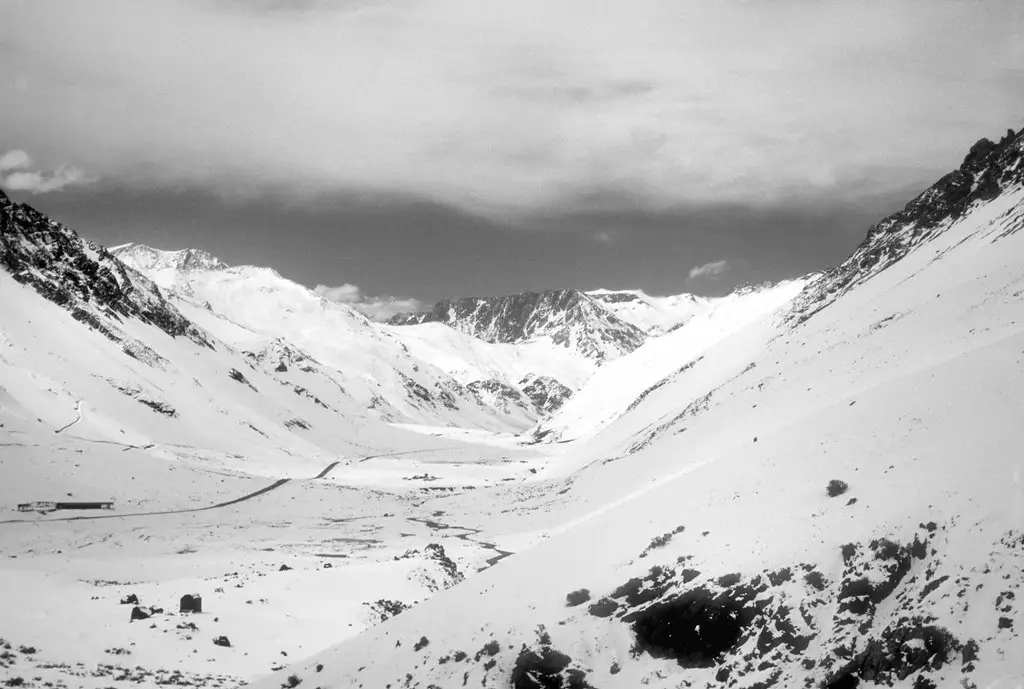
Mount Aconcagua is the highest mountain in the Americas, and the highest peak outside of the Himalayas.
What to see or do: Climbing Mount Aconcagua is a major attraction for mountaineers, offering spectacular views of the Andes mountain range. The climb can be challenging, but there are guided tours available for experienced climbers.
Don’t miss: The base camp at Plaza de Mulas is a popular destination for hikers and climbers, offering stunning views of the mountain and the surrounding landscape.
Insider travel tips: Be sure to acclimatize properly before attempting to climb Mount Aconcagua, as altitude sickness can be a serious risk. Pack warm, high-quality gear and hire a knowledgeable guide or tour company to ensure a safe and successful climb.
4. Talampaya National Park
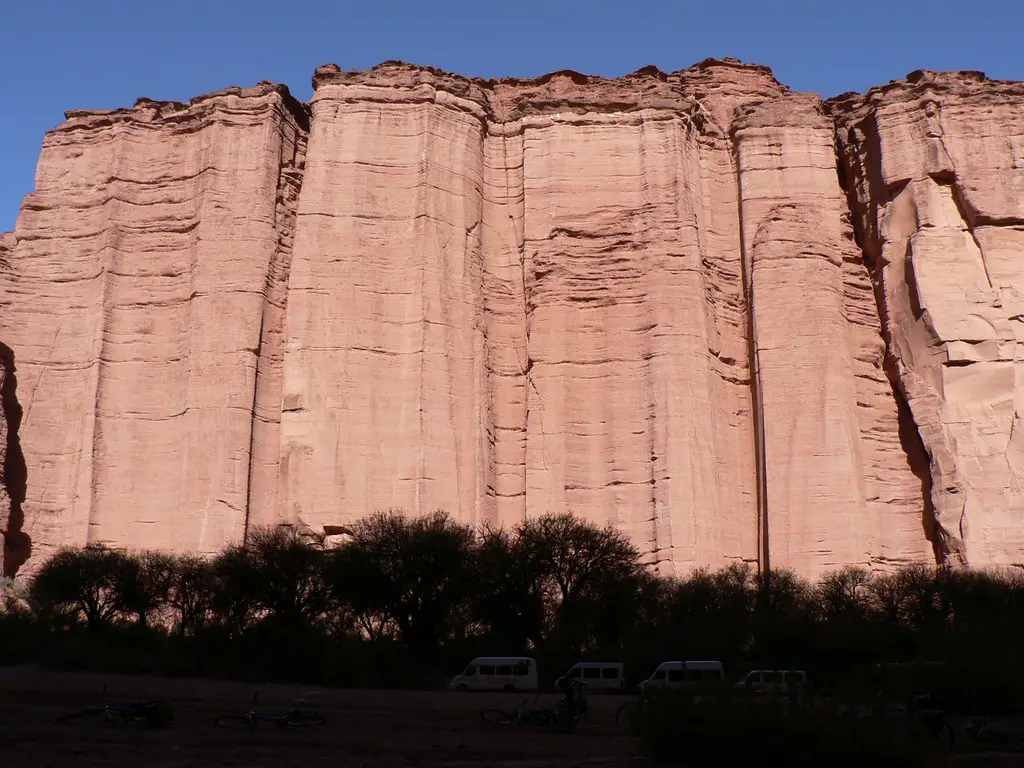
Talampaya National Park is a protected area located in La Rioja province, Argentina. It is characterized by its stunning red rock canyon formations, rich wildlife, and ancient archaeological sites.
What to see or do: Take a guided tour inside the canyon to see the impressive rock formations, including the “Cathedral,” a massive natural amphitheater. Marvel at the red, orange, and purple hues of the rock formations set against the clear blue sky.
See the abundant wildlife, including guanacos, foxes, and condors. Visit the ancient archaeological sites, such as the Petroglyphs, to see the complex artwork left by indigenous communities.
Don’t miss: A night tour to see the starry sky and the Milky Way with the naked eye, uninterrupted by city lights. The stargazing experience in the park is unlike any other.
Insider travel tips: Plan your visit during the cooler months (April – September) to avoid the heat and crowds. Wear comfortable shoes and bring sunscreen, a hat, and plenty of water.
Hire a local guide to learn about the park’s ecology and history.
5. Nahuel Huapi National Park
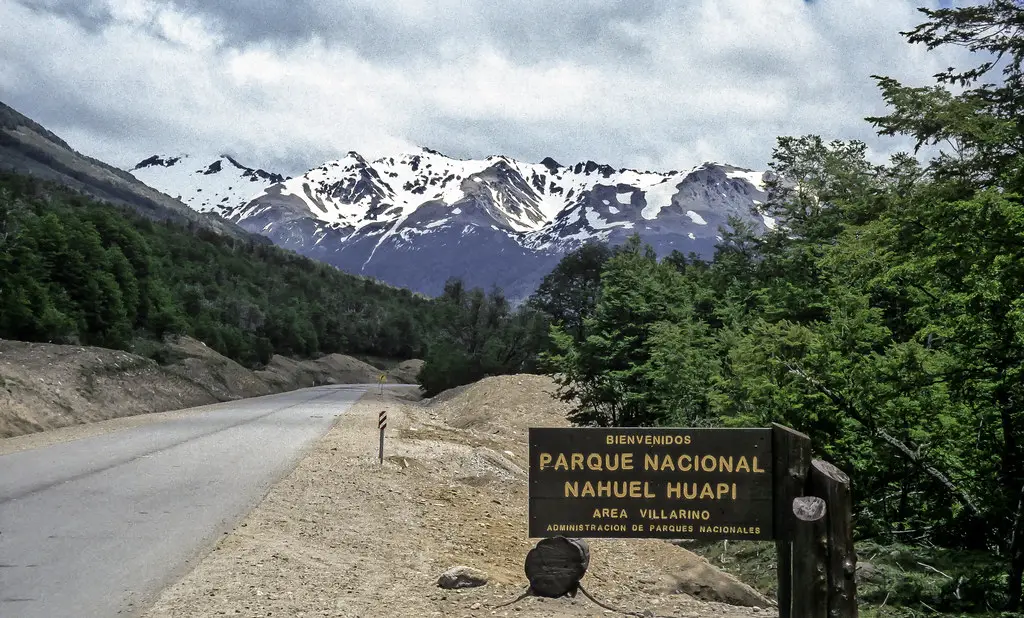
A national park located in the Argentine Andes, surrounding the Nahuel Huapi Lake.
What to see or do: Explore the stunning scenery of the Andes, including snow-capped peaks, shimmering lakes, and lush forests.
Hike or bike through the park’s vast network of trails, go fishing or kayaking on the lake, or take a scenic boat tour.
Wildlife viewing opportunities abound, with native species like Andean condors, guanacos, and pumas.
Don’t miss: A hike up to the summit of Cerro Campanario for panoramic views of the park and surrounding mountains. A visit to the charming mountain town of San Carlos de Bariloche, located on the shores of Lake Nahuel Huapi.
Insider travel tips: Don’t forget to pack layers for unpredictable weather, as temperatures can change dramatically throughout the day. Check out some of the park’s lesser-known trails for a quieter and more secluded hiking experience.
Be sure to try some of the local chocolate and craft beer in Bariloche.
6. Los Glaciares National Park
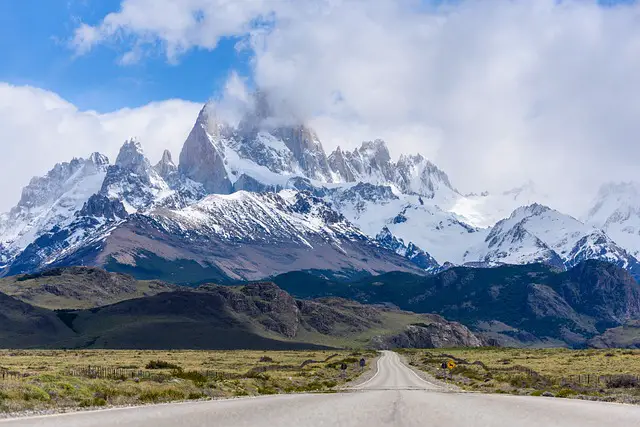
Los Glaciares National Park is a World Heritage Site located in the Argentinean Patagonia, close to the Chilean border. It was declared a national park in 1937 and covers a vast area of over 2,800 square miles.
What to see or do: The park is home to some of the world’s most stunning glaciers, including the famous Perito Moreno Glacier.
Visitors can take boat tours to get up close to the glaciers or hike along the numerous trails that offer breathtaking views of the mountain peaks, lakes, and forests.
Los Glaciares is also a paradise for bird watchers, with over 100 bird species calling the park home.
Don’t miss: No visit to Los Glaciares National Park is complete without witnessing the awe-inspiring Perito Moreno Glacier. Visitors can watch as massive chunks of ice calve off the glacier and crash into the turquoise waters below.
The Upsala Glacier and the Viedma Glacier are also must-see sights in the park.
Insider travel tips: Make sure to dress in layers since the weather can be unpredictable.
Bring sturdy hiking boots for trekking on the trails and consider booking a boat tour of the glaciers in advance to avoid missing out.
Keep an eye out for the park’s unique wildlife, including guanacos, Andean condors, and the elusive puma.
7. Ushuaia
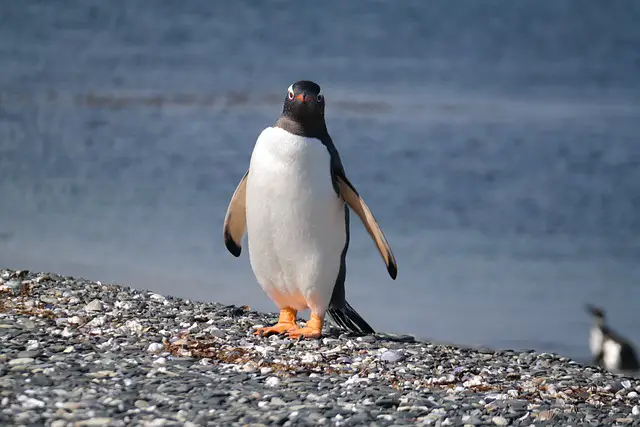
Ushuaia is the southernmost city in the world and is located in Argentina.
What to see or do: – Take a boat ride through the Beagle Channel and admire the stunning scenery and wildlife, such as sea lions, penguins, and whales.
Don’t miss: – A visit to the Museo Maritimo y del Presidio, which showcases the history of Ushuaia as a former prison colony and its role as a port town.
Insider travel tips: – Ushuaia can experience extreme weather conditions, so make sure to pack warm clothing and waterproof gear regardless of the time of year you visit.
8. Tierra del Fuego National Park
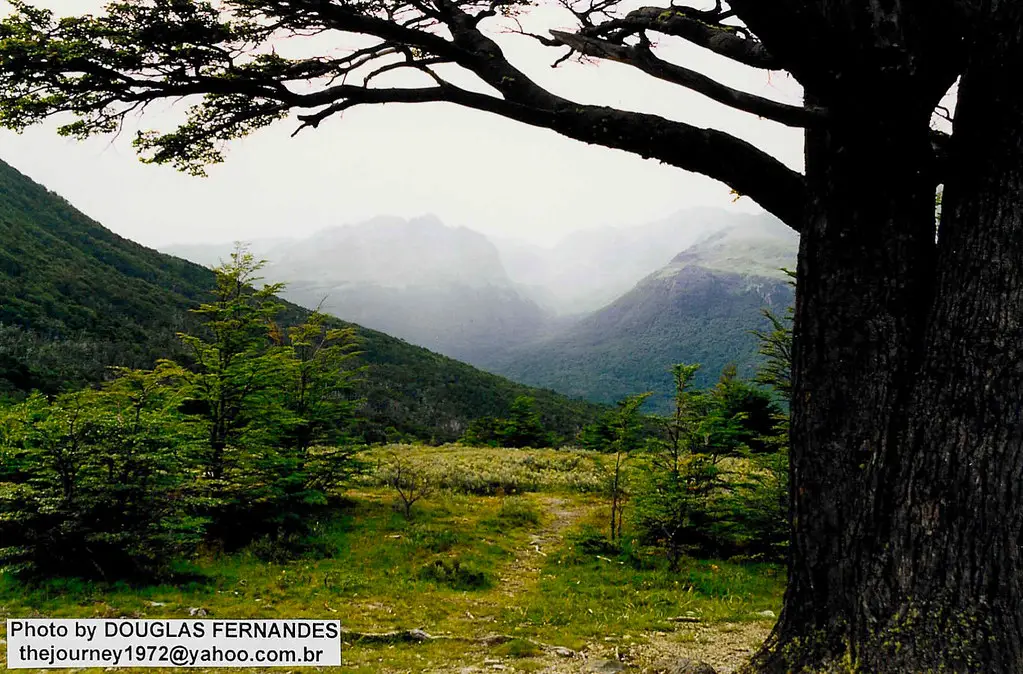
Tierra del Fuego National Park is located on the southern tip of Argentina in the province of Tierra del Fuego. It is a protected area that covers 63,000 hectares of land and is home to diverse flora and fauna.
What to see or do: Visitors can enjoy hiking, fishing, canoeing, and birdwatching in the park.
There are several trails available that showcase the stunning beauty of the area, such as the Coastal Path, Pampa Alta Trail, and Lapataia Bay Trail.
Don’t miss: Be sure to visit the End of the World post office, which is located at the entrance of the park.
It is a unique experience to send a postcard stamped with an “End of The World” mark to family and friends.
Insider travel tips: Make sure to bring rain gear and warm clothes, as the weather can be unpredictable.
Additionally, visitors should be mindful of the park’s regulations regarding fire and littering to help preserve the natural beauty of the area.
9. Lake Nahuel Huapi
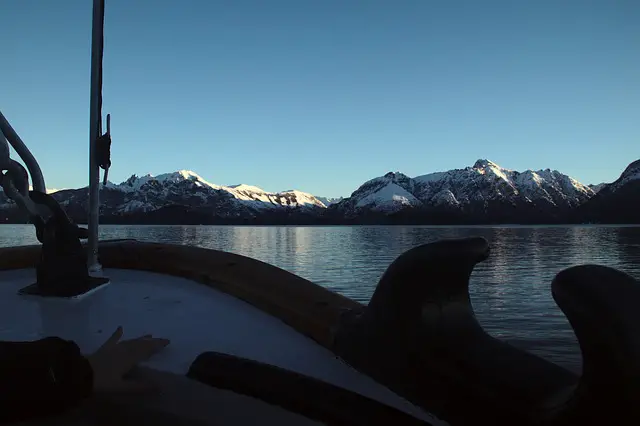
Lake Nahuel Huapi is an expansive glacial lake located in the Argentine Patagonia, surrounded by stunning snow-capped mountains.
What to see or do: Visitors can boat on the crystal-clear waters, hike through the surrounding Andes, go fishing for trout, or simply relax on the beaches.
The lake is also home to the Los Arrayanes National Park, which boasts a unique forest of rare cinnamon-colored trees.
Don’t miss: Make sure to take a boat tour and explore the lake’s islands and hidden coves. The sunset views from the lake are also not to be missed.
Insider travel tips: Visit during the early spring or autumn to avoid the crowds, enjoy cooler temperatures, and take in the colorful foliage. If you’re feeling adventurous, try out some of the lake’s many water sports and activities, such as kayaking or windsurfing.
Finally, be sure to taste the local smoked trout, which is a delicacy in the region.
10. Aconcagua Provincial Park
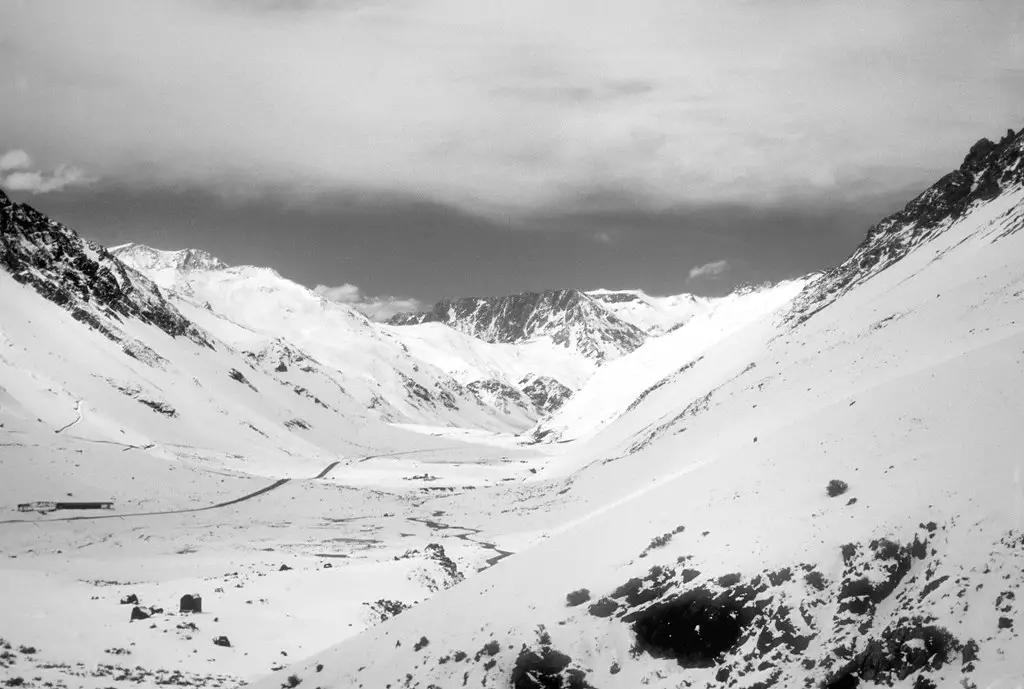
Aconcagua Provincial Park is a protected area located in the Argentinean Andes, known for its stunning mountain views, glaciers, and crystal-clear lakes.
What to see or do: The park offers a range of activities for outdoor enthusiasts, including hiking, climbing, skiing, and camping. Visitors can explore the park’s numerous trails, including the famous Mount Aconcagua, the highest peak in the Americas.
The park’s diverse landscape is also home to a range of wildlife, such as guanacos, condors, and pumas.
Don’t miss: Don’t miss the opportunity to visit the Horcones lagoon, located at the base of the mountain, which offers spectacular views of Aconcagua’s snow-capped summit.
Additionally, a visit to the Puente del Inca, a natural rock formation, is also worth seeing.
Insider travel tips: – It’s recommended to visit during the summer months (December-March) to avoid harsh weather conditions.
11. Cerro Catedral
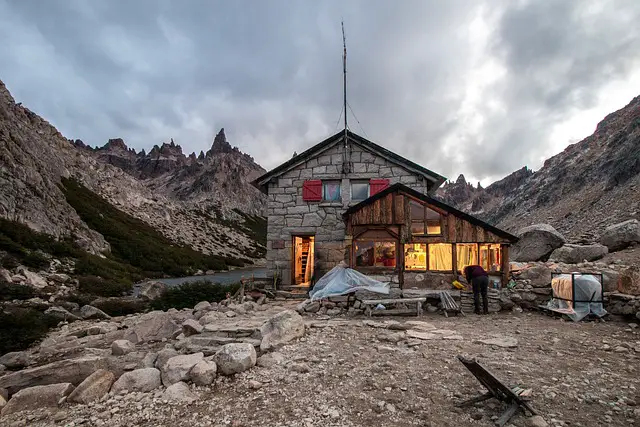
A mountain located in the Nahuel Huapi National Park near San Carlos de Bariloche, Argentina.
What to see or do: Skiing, snowboarding, hiking, mountain biking, and rock climbing.
Don’t miss: The breathtaking views of the Andes from the top of the mountain, including the stunning turquoise waters of Nahuel Huapi Lake.
Insider travel tips: Bring warm clothing, as temperatures can drop quickly. Visit during the winter months (June to September) for the best skiing and snowboarding conditions.
For those interested in hiking or biking, consider visiting in the summer months (December to March) for mild weather and stunning views.
12. Quebrada de Humahuaca
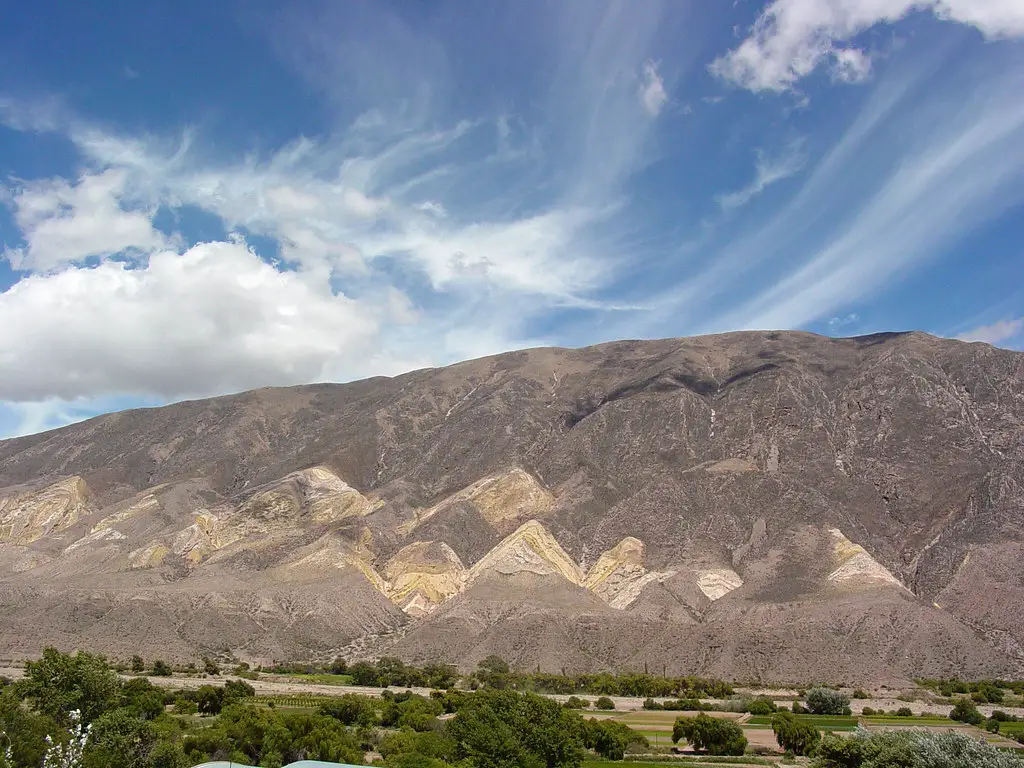
Quebrada de Humahuaca is a stunning mountain valley located in the Jujuy Province of Argentina.
What to see or do: Explore the rich cultural and historical heritage of the area by visiting the charming small towns such as Purmamarca, Tilcara, and Humahuaca.
Enjoy the scenic beauty of the colorful rock formations, the Cerro de los Siete Colores (Hill of Seven Colors), and the salt flats of Salinas Grandes.
Don’t miss the opportunity to try traditional Andean dishes and shop for handmade crafts and textiles.
Insider travel tips: – Visit during the winter months (June to August) to avoid the crowds and enjoy cooler temperatures.
13. Cerro Torre
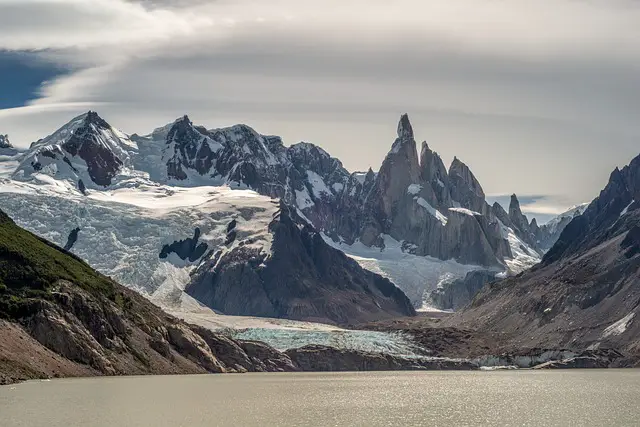
A mountain located in southern Patagonia, on the border between Argentina and Chile.
What to see or do: Hike in the beautiful valleys and forests surrounding Cerro Torre. For experienced climbers, attempt to summit the mountain.
Don’t miss: Seeing the stunning ice formations in the mountain’s glaciers.
Insider travel tips: Be prepared for unpredictable weather conditions and bring appropriate gear. It’s also important to obtain permits for hiking and climbing in the area.
14. Bariloche
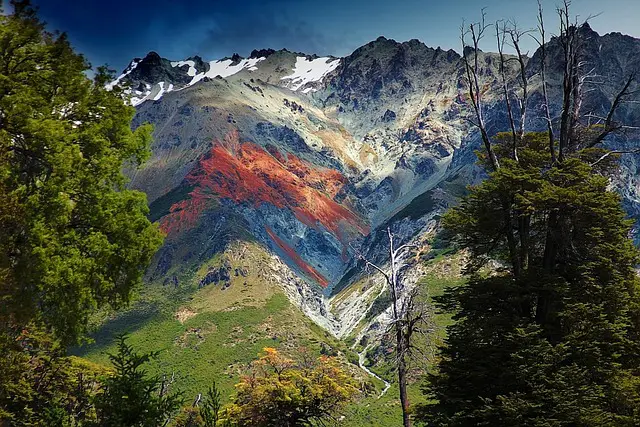
A picturesque town in the Argentine Patagonia known for its stunning natural surroundings and outdoor activities.
What to see or do: – Visit the Cerro Catedral Ski Resort for skiing and snowboarding in the winter, or hiking and mountain biking in the summer.
Don’t miss: – Trying the famous Argentine chocolate and pastries at one of the local chocolaterias.
Insider travel tips: – The shoulder seasons of spring (September to November) and fall (March to May) offer great weather and fewer crowds.
15. Monte León National Park
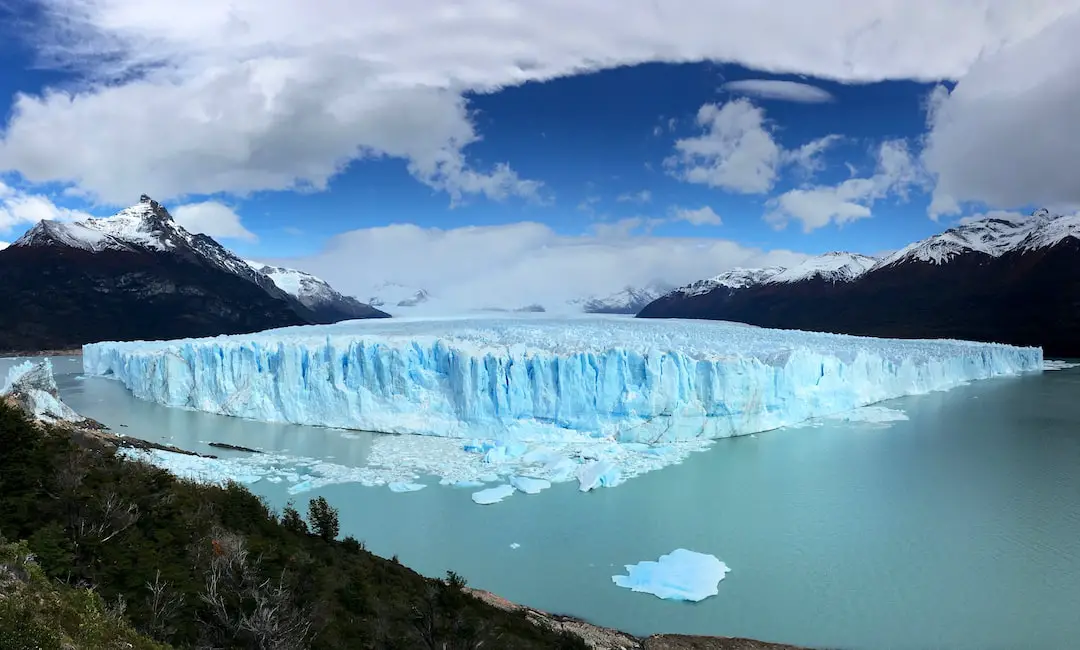
Monte León National Park is a protected coastal area located in the Argentine province of Santa Cruz.
What to see or do: Visitors can enjoy a unique landscape that includes grasslands, cliffs, and beaches, as well as an abundance of wildlife such as guanacos, foxes, and many bird species.
The park is also home to ancient archaeological sites, including cave paintings and fossils.
Don’t miss: A hike to the top of the cliffs offers breathtaking panoramic views of the sea and surrounding landscape. The beaches within the park are also beautiful and perfect for relaxing or surfing.
Insider travel tips: The park can only be visited with a guide, so make sure to book a tour in advance.
It’s also a good idea to bring sunscreen and plenty of water, as the area can get very hot and dry.
Finally, don’t forget your camera as the scenery in the park is simply stunning.
16. Peninsula Valdes
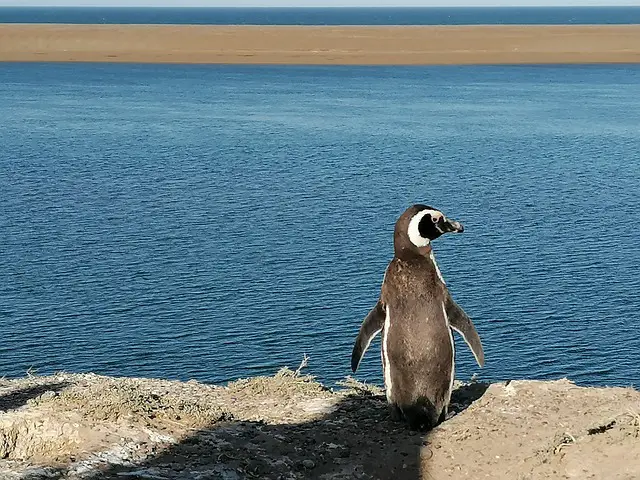
A nature reserve located in Argentina, famous for its diverse wildlife and conservation efforts.
What to see or do: Observe Southern Right Whales at close range along the coast.
Don’t miss: Visiting the Interpretation Center, which showcases the history and importance of conserving Peninsula Valdes.
Insider travel tips: The best time to see the whales is from June to December.
17. Salinas Grandes
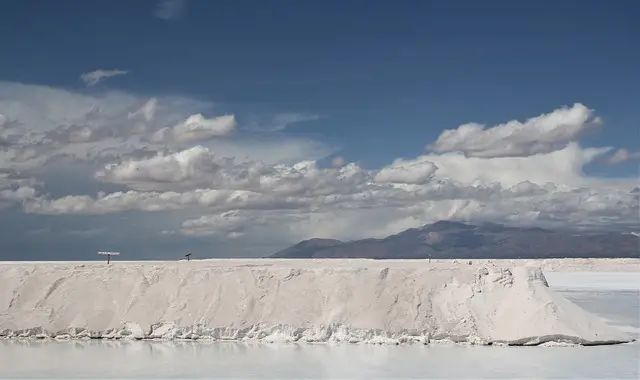
A vast salt flat located in the Jujuy Province of Argentina, covering an area of over 3,000 square miles.
What to see or do:
Don’t miss:
Insider travel tips: Don’t forget to bring sunglasses and sunscreen as the sun reflecting off the salt flats can be harsh.
It is also advisable to go in the dry season, from May to October, as the wet season often causes flooding and closed roads.
Visitors should also bring enough water and snacks as amenities in the area are limited.
18. Laguna de los Tres
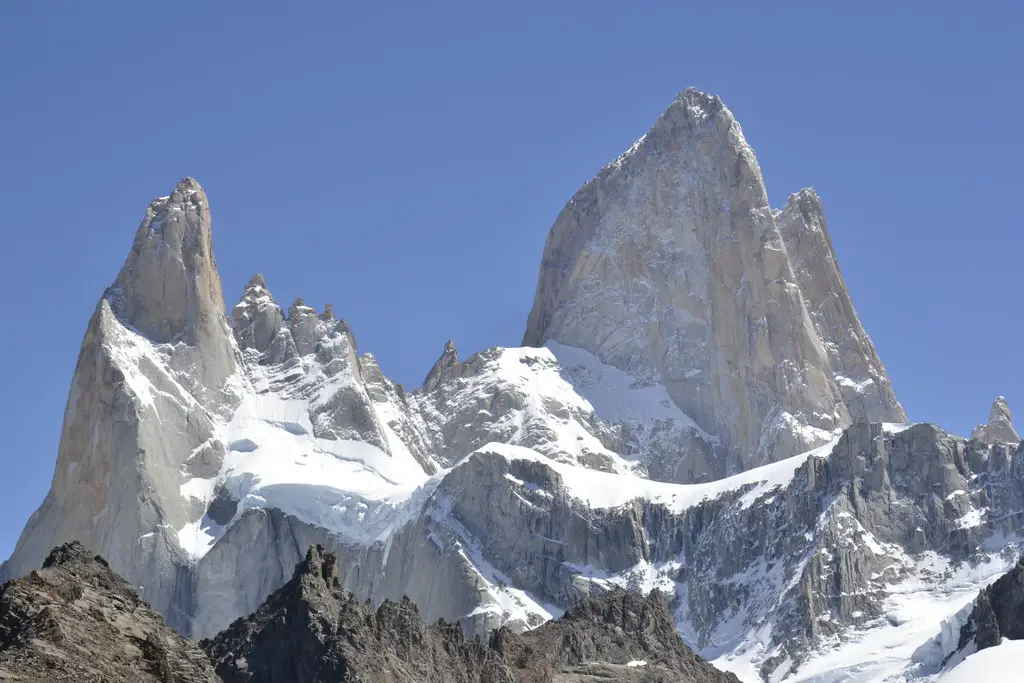
A stunning glacial lake located in Los Glaciares National Park in Argentine Patagonia.
What to see or do: Enjoy an exhilarating full-day hike through beautiful forests, past glistening streams, and steep slopes until reaching the panoramic lookout over the Laguna de los Tres.
Admire the snow-capped peaks and the turquoise waters of the lake, considered one of the most beautiful in Patagonia.
Don’t miss: Watching the sunrise over the majestic Mount Fitz Roy, which the lake sits beneath. It’s a truly unforgettable experience.
Insider travel tips: Bring warm and waterproof clothing, sturdy hiking boots, and plenty of water and snacks. The best time to visit is from October to April, when the weather is milder, and the colors more vibrant.
Start early to avoid the crowds on the trail and summit, and be prepared for intense but rewarding physical effort.
19. Villavicencio Natural Reserve
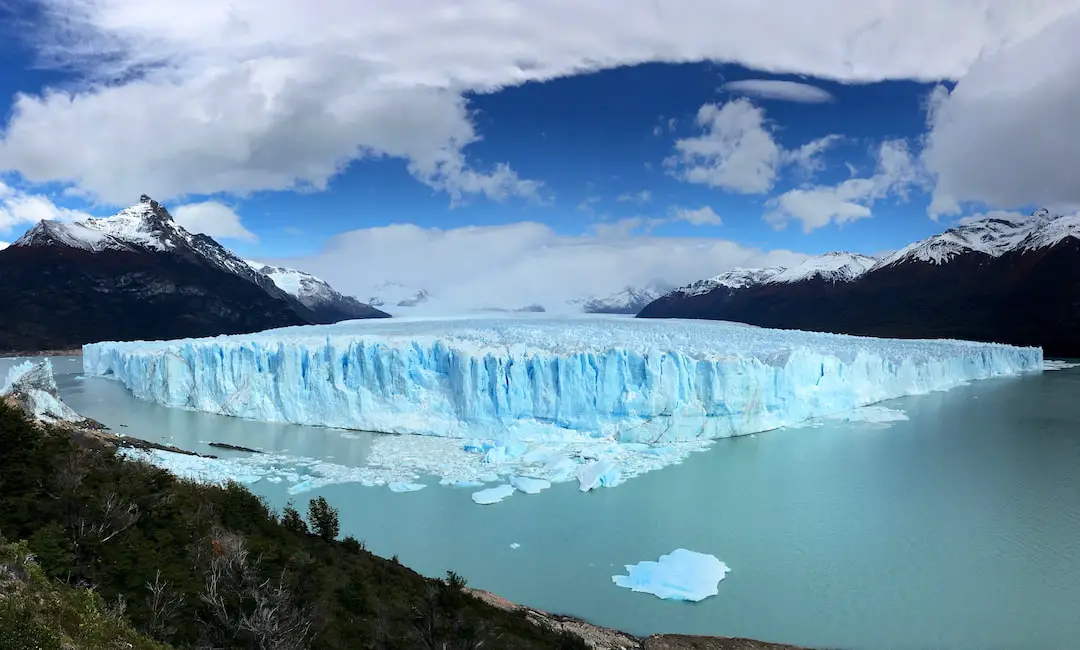
Villavicencio Natural Reserve is a protected area located in the foothills of the Andes Mountains in Argentina.
What to see or do: Explore the beautiful landscapes, mountains, and waterfalls of the reserve. Take a guided hike through the forest to spot local wildlife such as pumas and condors.
Relax in the natural hot springs and recharge in the midst of the tranquil surroundings.
Don’t miss: The iconic Hotel Termas de Villavicencio, a grand colonial building that was a favorite of the country’s elite in the early 1900s.
Take a guided tour of the building and learn about its fascinating history.
Insider travel tips: – Visit in the spring or fall for milder temperatures and fewer tourists.
20. Puente del Inca
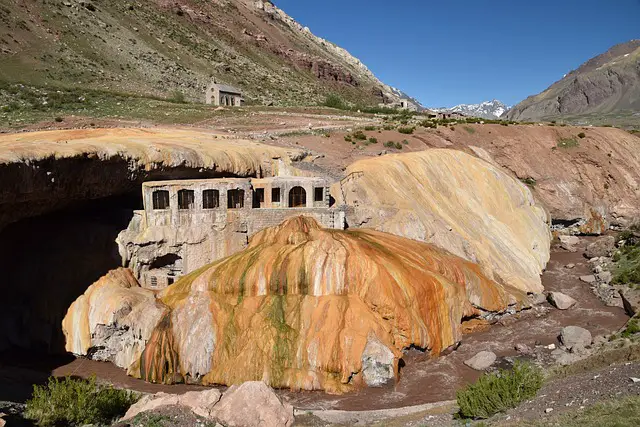
Puente del Inca is a natural wonder located in the Andes Mountains of Argentina.
What to see or do: Visitors can see the unique bridge-like structure created by natural mineral formations, as well as the surrounding mountains and hot springs.
Don’t miss: The Puente del Inca Resort, which offers spa treatments and hot spring relaxation, as well as a chance to explore the surrounding hiking trails.
Insider travel tips: Be prepared for high altitude and bring warm clothing, as temperatures can quickly drop in the mountains. Also, be sure to bring a camera to capture the stunning views.
21. Hornocal
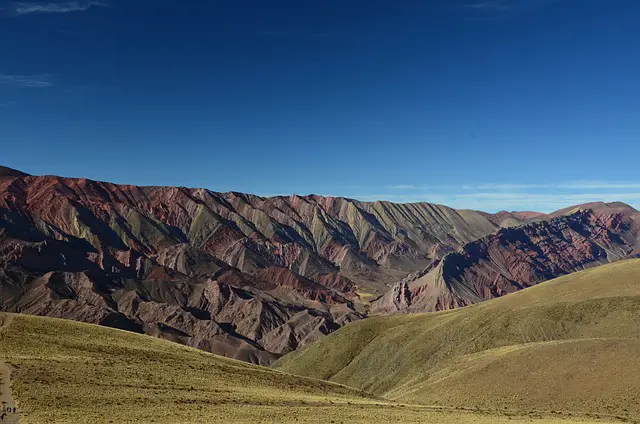
Hornocal (also known as Cerro de los 14 colores) is a mountain range located in the Jujuy province of Argentina.
What to see or do: Visitors can admire the mountain’s unique and vibrant colors that change throughout the day, depending on the angle of the sun.
Hiking tours are also available for those looking to explore the surrounding area.
Don’t miss: Make sure to stop at the viewpoint to capture the breathtaking panoramic views of the Hornocal mountains.
Insider travel tips: It is recommended to visit during the dry season (April to November) to avoid muddy roads and potential landslides. Additionally, be sure to bring warm clothing as temperatures can drop in the evening.
22. Sierras de Córdoba
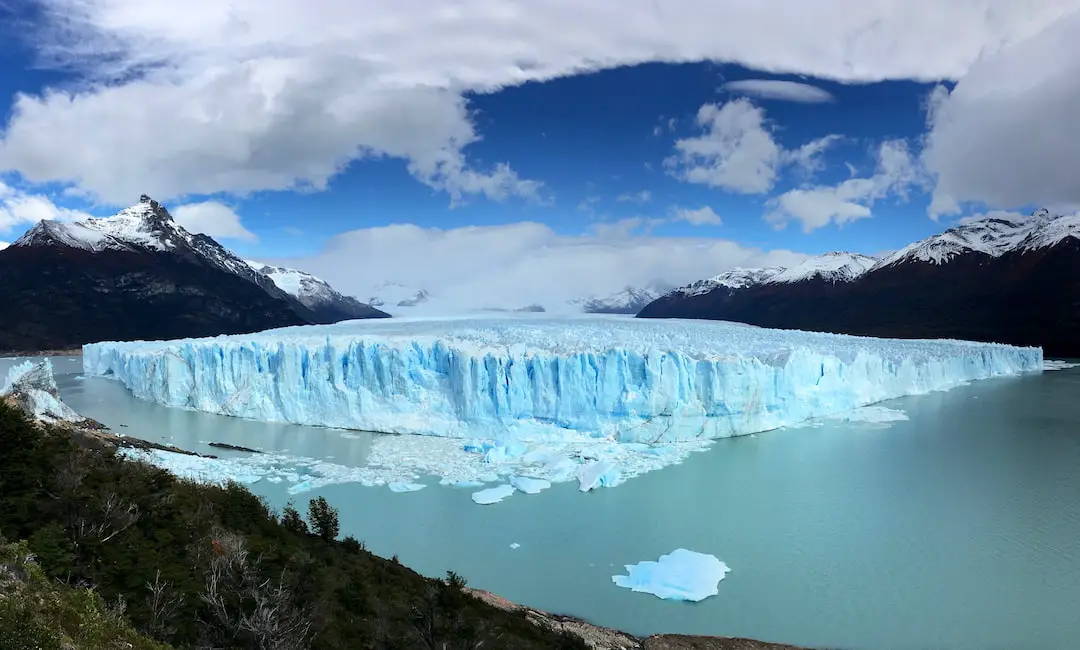
Sierras de Córdoba is a mountain range located in the province of Córdoba, Argentina.
What to see or do: – Enjoy breathtaking views from the tops of the mountains.
Don’t miss: – The picturesque drive along the Camino de las Altas Cumbres.
Insider travel tips: – Be prepared for sudden temperature changes, as the weather in the mountains can be unpredictable.
23. Camino de las Altas Cumbres
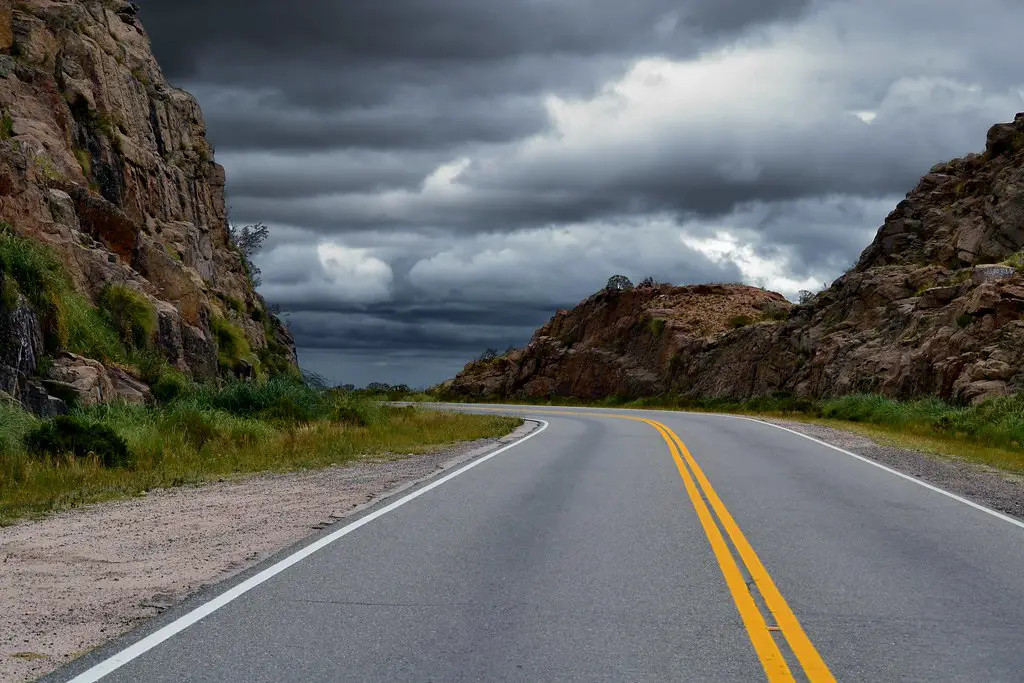
A scenic mountain road in the province of Córdoba, Argentina.
What to see or do: Drive or cycle through the winding road and enjoy the breathtaking views of the surrounding mountains and valleys.
There are several lookout points along the way, including Los Gigantes, where visitors can take in panoramic views of the Sierras Grandes range.
Don’t miss: The Condorito National Park, located near the northern entrance of the Camino de las Altas Cumbres. The park is home to diverse flora and fauna, including the Andean condor.
Insider travel tips: It’s best to start the drive early in the morning to avoid traffic and to have the opportunity to stop at multiple viewpoints.
Be sure to pack warm clothing, as temperatures can drop significantly at higher altitudes. Additionally, bring enough water and snacks as there are limited facilities along the road.
24. Esteros del Ibera
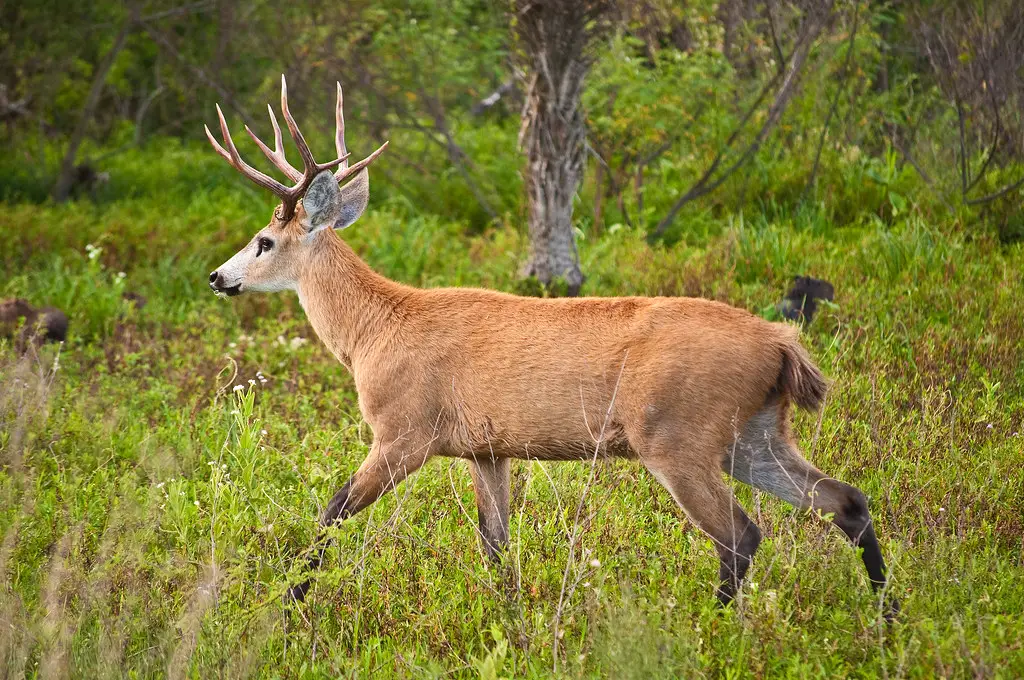
Esteros del Ibera is a vast wetland nature reserve located in northern Argentina, covering over 13,000 km² of marshes, lagoons, and swamps.
What to see or do:
Don’t miss:
Insider travel tips:
25. Quebrada de Cafayate
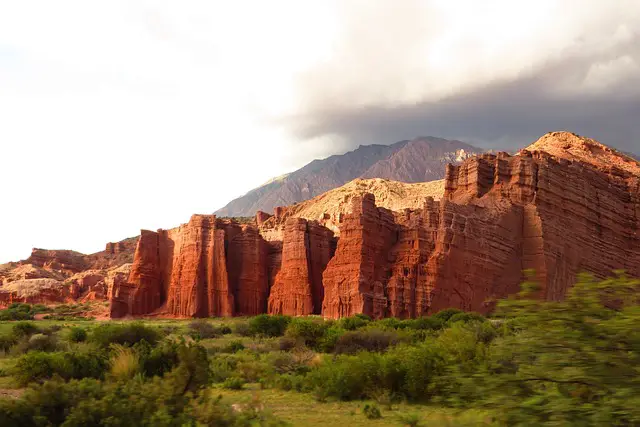
Quebrada de Cafayate is a gorge located in the province of Salta, Argentina.
What to see or do: Take a scenic drive through the gorge and marvel at the stunning rock formations and vibrant colors. There are also several hiking trails where you can explore the area on foot.
Don’t miss: The Amphitheater, a natural formation resembling a concert venue with perfect acoustics. Also, keep an eye out for the impressive rock formations known as the Devil’s Throat and the Castles.
Insider travel tips: Visit early in the morning or late in the afternoon to avoid the crowds and get the best lighting for photos.
Bring sunscreen, water, and comfortable shoes for hiking.
26. Laguna Brava
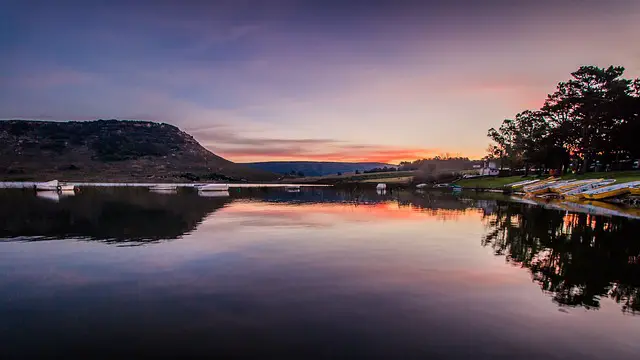
Laguna Brava is a remote and pristine lake located in the Andes Mountains of Argentina.
What to see or do: Visitors can come to admire the stunningly clear turquoise waters, surrounded by breathtaking mountain landscapes, and unique wildlife such as Vicuñas and Flamingos.
It is also a popular spot for fishing.
Don’t miss: Make sure to take a hike to the top of the surrounding mountains for the incredible panoramic views that go on far and wide.
Insider travel tips: Come prepared for high altitude, as Laguna Brava is located at over 4,000 meters above sea level. It is best to acclimate to the altitude before visiting.
Additionally, the area is very remote and lacks infrastructure, so make sure to bring all necessary supplies and equipment for your trip.
27. Talampaya Canyon
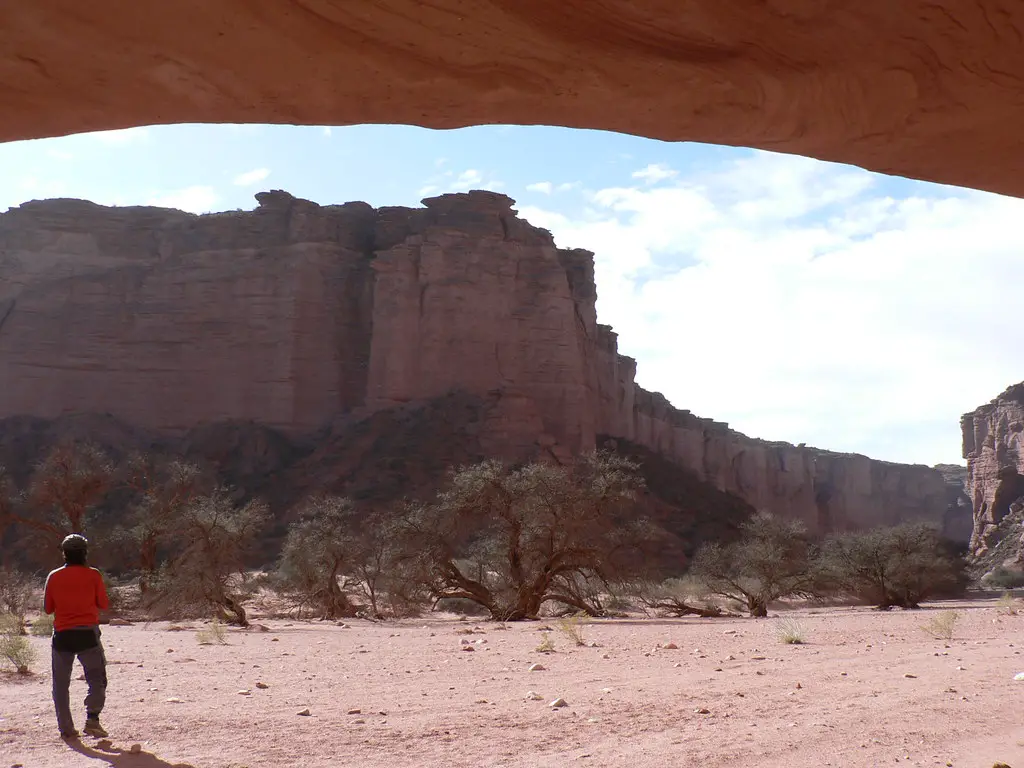
Talampaya Canyon is a stunning natural wonder located in La Rioja, Argentina. It is a UNESCO World Heritage site and one of the most popular tourist destinations in the region.
What to see or do: Visitors can take a guided tour through the canyon to witness its towering red sandstone walls, unique rock formations, and diverse plant and animal life.
The canyon is also home to stunning prehistoric rock art that dates back thousands of years.
Don’t miss: The “Cathedral” section of the canyon, where the walls tower up to 490 feet high, is a must-see. The “Monk” rock formation, which resembles a hooded figure, is another unforgettable sight.
Insider travel tips: Be sure to bring plenty of water and wear comfortable shoes for the tour, as it can be a bit strenuous.
The best time to visit is during the cooler months of May through September. Don’t forget your camera – the canyon offers countless photo opportunities.
28. Difunta Correa Sanctuary
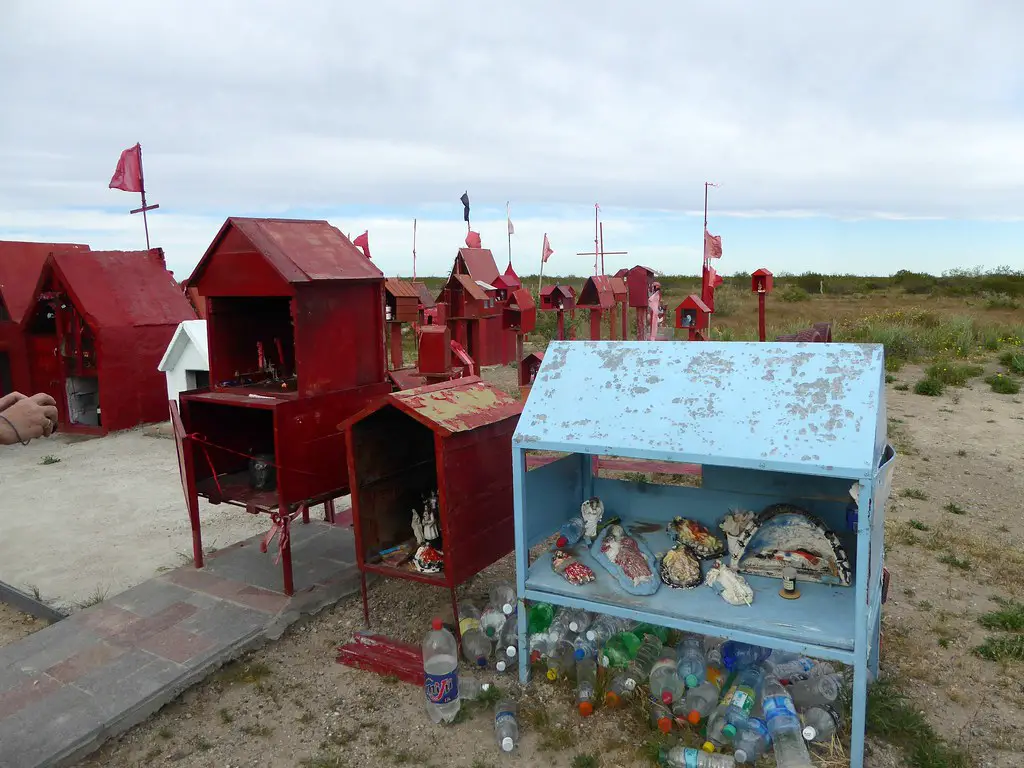
The Difunta Correa Sanctuary is a popular pilgrimage site located in the province of San Juan, Argentina.
What to see or do: Visitors can see the many offerings and tributes left by devotees seeking blessings and protection from the revered figure of Difunta Correa.
The Sanctuary also has a museum where visitors can learn about the history and lore of the miracle-working figure.
Don’t miss: The heart of the Sanctuary is an impressive chapel dedicated to Difunta Correa, with a striking altar and tear-jerking altarpiece. Additionally, the impressive landscape and views of the San Juan mountains make this destination a must-visit for nature aficionados.
Insider travel tips: To immerse yourself in the full Difunta Correa experience, visit on or around February 8th, the date of her death. It’s traditionally a time for processions and celebrations in her honor.
Additionally, plan ahead and bring extra food and water, as this remote location may not have easily accessible amenities.
29. Laguna de los Pozuelos Wildlife Reserve
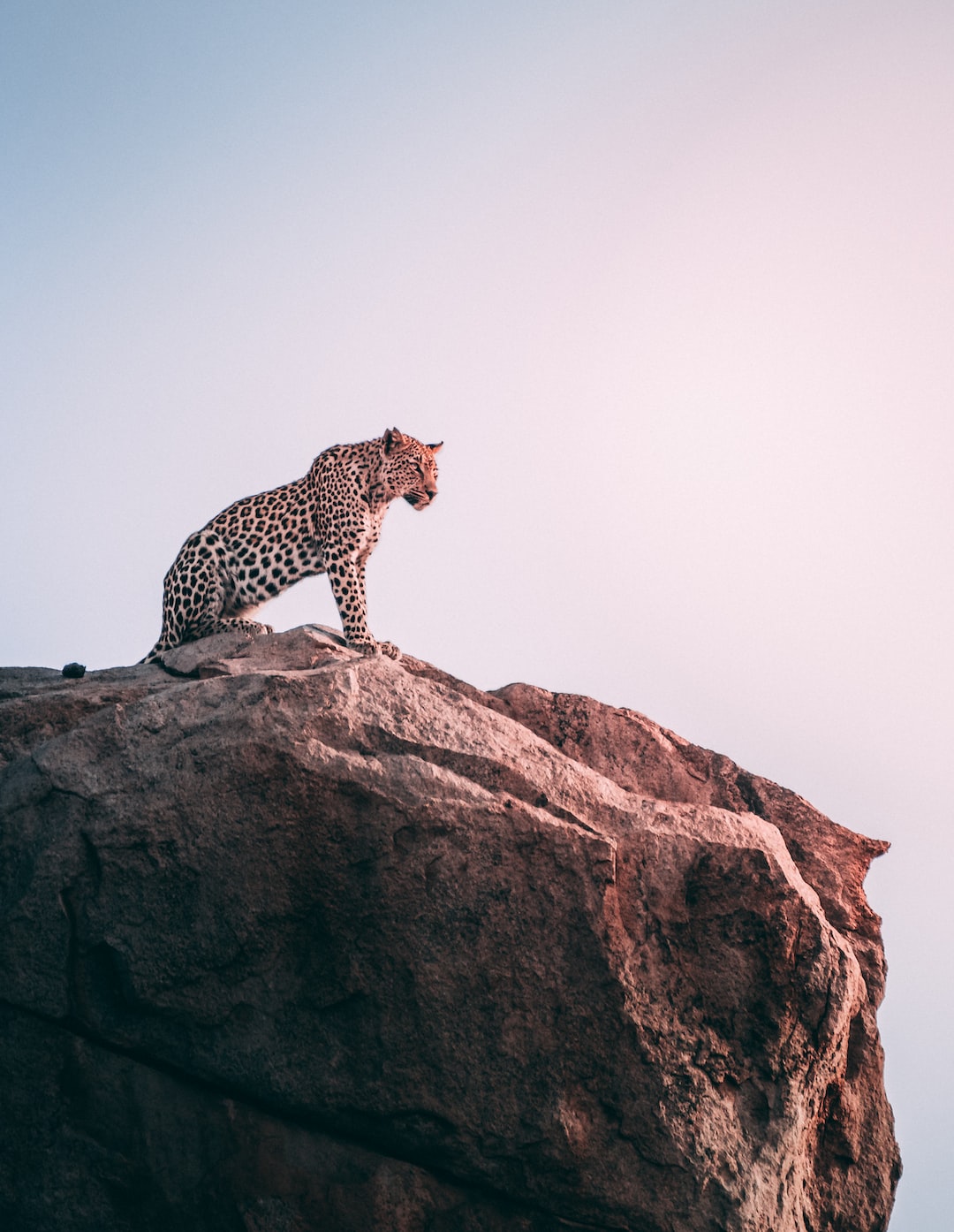
Laguna de los Pozuelos Wildlife Reserve is a protected wilderness area located in the Jujuy Province of Argentina, covering an area of 16,000 hectares.
What to see or do: The reserve is a sanctuary for an impressive variety of bird species, including the iconic Andean flamingos, Puna teal, speckled teal, and more.
Visitors can take a guided tour of the reserve to explore the different trails and birdwatching spots.
Don’t miss: A visit to the Nature Interpretation Center inside the reserve, where you can learn about the importance of protecting this unique habitat, the geology of the region, and the reserve’s biodiversity.
Insider travel tips: – The best time to visit the reserve is during the summer (December to February), when bird sightings are at their peak.